Predictions & Data for this entry
| Model: std | climate: Cfb, Dfb, Dfc | migrate: | phylum: |
| COMPLETE = 3.2 | ecozone: THp | food: bjP, biD, jiCi, jiS | class: |
| MRE = 0.089 | habitat: 0iFr, 0iFl | gender: D | order: |
| SMSE = 0.021 | embryo: Fbf | reprod: O | family: |
Zero-variate data
| Data | Observed | Predicted | (RE) | Unit | Description | Reference |
|---|---|---|---|---|---|---|
| ah | 154 | 148.4 | (0.03608) | d | age at hatching | PoliSimo2004 |
| ab | 161 | 168.8 | (0.04857) | d | age at birth | HessTaug1987 |
| tp | 1460 | 1532 | (0.04949) | d | time since birth at puberty for females | Abra1971 |
| tpm | 1095 | 1095 | (4.746e-05) | d | time since birth at puberty for males | Abra1971 |
| am | 5475 | 5475 | (7.633e-05) | d | life span | HoldMalc2002, SoutHold2006 |
| Lh | 0.9 | 0.9131 | (0.01454) | cm | total length at hatching | HoldMalc2002 |
| Lb | 1.2 | 1.183 | (0.01417) | cm | total length at birth (stage 2) | HoldMalc2002 |
| Lp | 7.7 | 7.574 | (0.0164) | cm | total length at puberty | Abra1971 |
| Li | 12 | 12.5 | (0.04146) | cm | ultimate total length for females | HoldMalc2002 |
| Lim | 16 | 14.54 | (0.09122) | cm | ultimate total length for males | HoldMalc2002 |
| L2 | 4.7 | 4.52 | (0.03821) | cm | total length at 2yr for females | Abra1971 |
| L2m | 4.9 | 4.866 | (0.006986) | cm | total length at 2yr for males | Abra1971 |
| Wwb | 0.014 | 0.0155 | (0.1075) | g | dry weight at birth | Abra1971 |
| Wwp | 18 | 17.07 | (0.05183) | g | wet weight at puberty | Abra1971 |
| Wwi | 68.2 | 76.69 | (0.1244) | g | ultimate wet weight for females | MaguHudi2004 |
| Wwim | 161.5 | 133 | (0.1766) | g | ultimate wet weight for males | MaguHudi2004 |
| Ri | 0.5479 | 0.6092 | (0.1117) | #/d | max reprod rate | HoldMalc2002 |
Uni- and bivariate data
| Data | Figure | Independent variable | Dependent variable | (RE) | Reference |
|---|---|---|---|---|---|
| tL_VLDf | 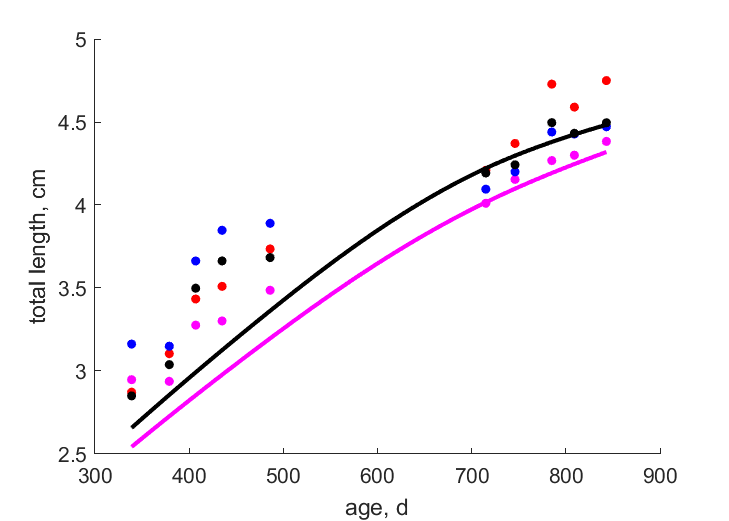 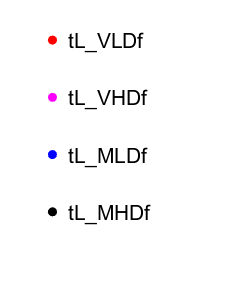 | age | total length | (0.1052) | Bast2014 |
| tL_VHDf |   | age | total length | (0.0515) | Bast2014 |
| tL_MLDf |   | age | total length | (0.07671) | Bast2014 |
| tL_MHDf |   | age | total length | (0.05082) | Bast2014 |
| tL_VLDm | 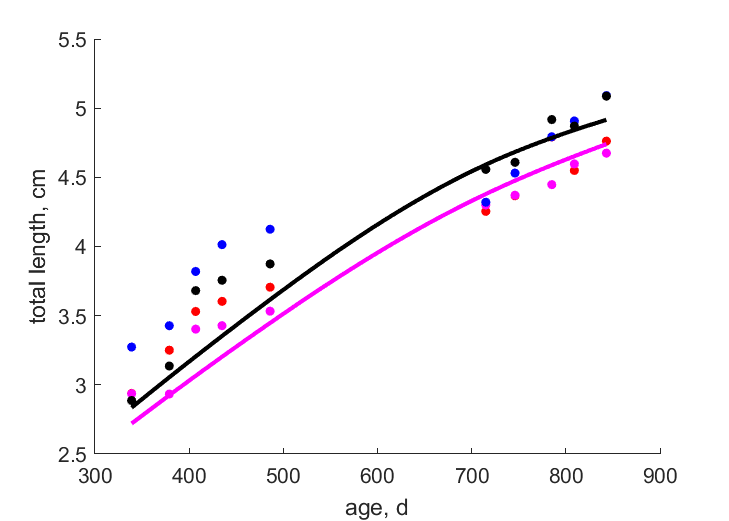 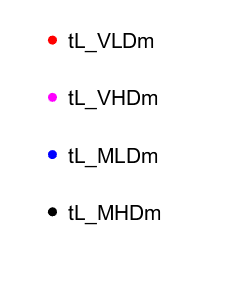 | age | total length | (0.05617) | Bast2014 |
| tL_VHDm |   | age | total length | (0.03415) | Bast2014 |
| tL_MLDm |   | age | total length | (0.07735) | Bast2014 |
| tL_MHDm |   | age | total length | (0.04143) | Bast2014 |
| tWw_VLDf |   | age | wet weight | (0.1873) | Bast2014 |
| tWw_VHDf |   | age | wet weight | (0.074) | Bast2014 |
| tWw_MLDf |   | age | wet weight | (0.1777) | Bast2014 |
| tWw_MHDf |   | age | wet weight | (0.06085) | Bast2014 |
| tWw_VLDm | 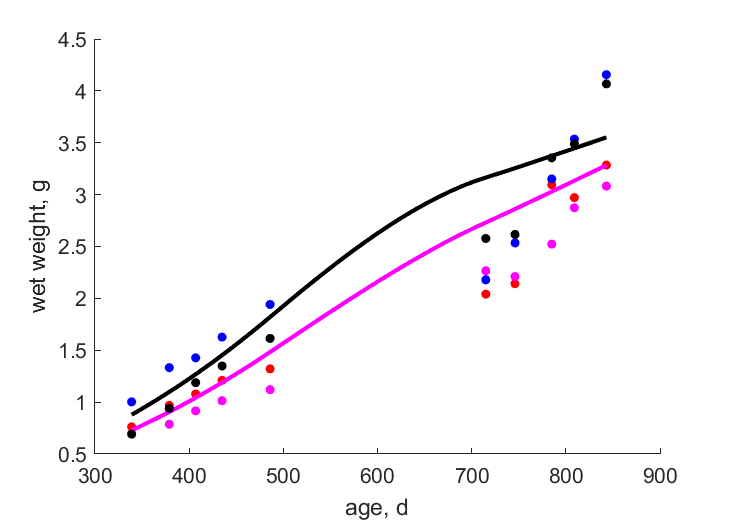 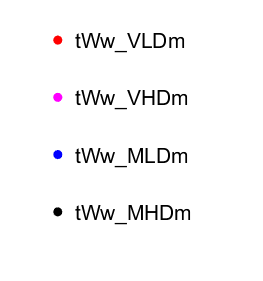 | age | wet weight | (0.1036) | Bast2014 |
| tWw_VHDm |   | age | wet weight | (0.1661) | Bast2014 |
| tWw_MLDm |   | age | wet weight | (0.1501) | Bast2014 |
| tWw_MHDm |   | age | wet weight | (0.1161) | Bast2014 |
| tL_Westf | 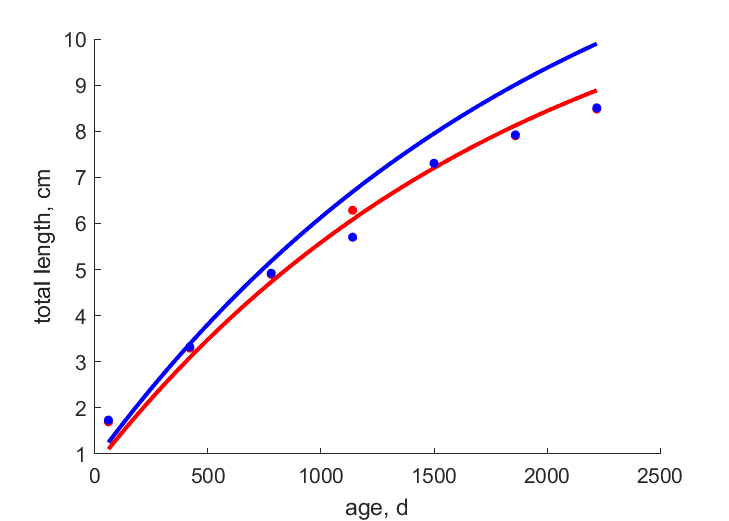 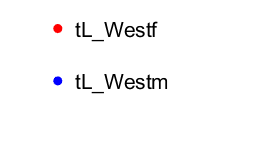 | age | total length | (0.04759) | WestPurs1982 |
| tL_Westm |   | age | total length | (0.1249) | WestPurs1982 |
| tWw_Poli1 |   | age | wet weight | (0.2271) | PoliSimo2004 |
| tWw_Poli2 |   | age | wet weight | (0.226) | PoliSimo2004 |
| cLW_Hud_fem |  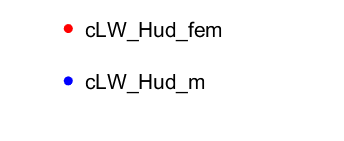 | carapace length | wet weight | (0.06108) | HudiJank2011 |
| cLW_Hud_m |   | carapace length | wet weight | (0.06412) | HudiJank2011 |
| LWw_Mag_fem | 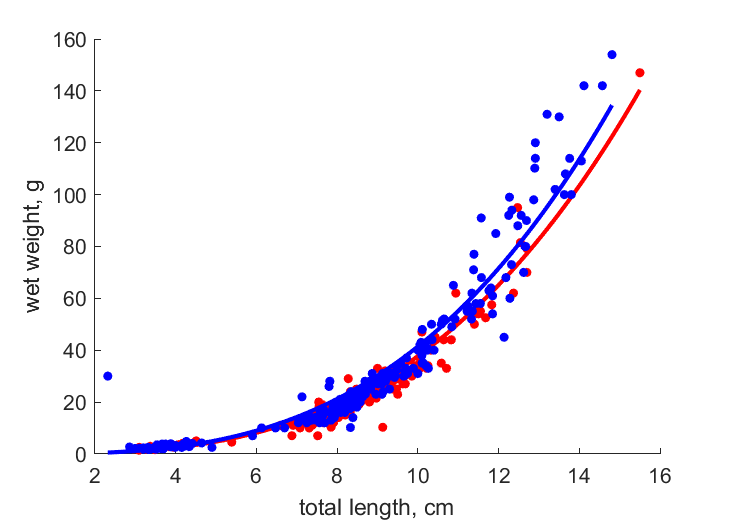 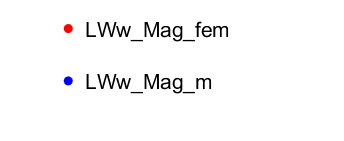 | total length | wet weight | (0.1375) | MaguHudi2004 |
| LWw_Mag_m |   | total length | wet weight | (0.1496) | MaguHudi2004 |
| LN | 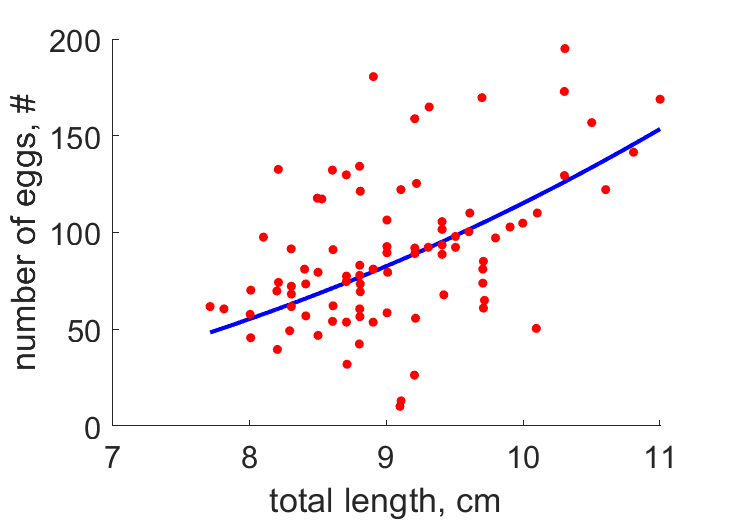 | total length | number of eggs | (0.2712) | Abra1971 |
| LW | 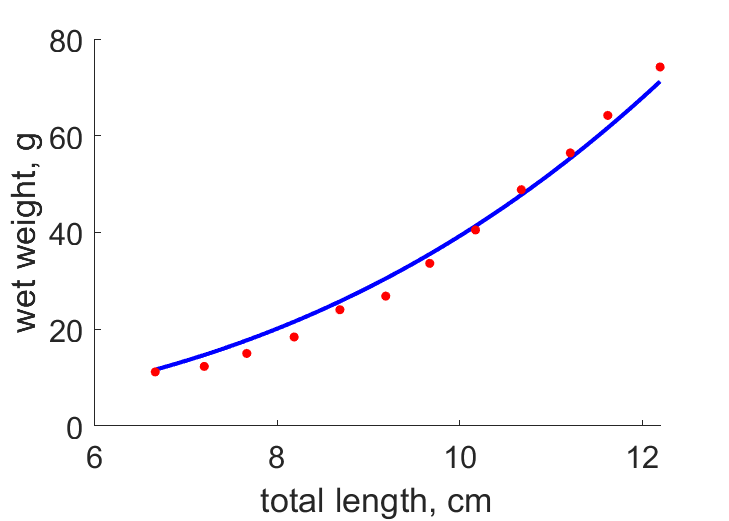 | total length | wet weight | (0.05768) | Abra1971 |
Pseudo-data at Tref = 20°C
| Data | Generalised animal | Astacus astacus | Unit | Description |
|---|---|---|---|---|
| v | 0.02 | 0.02285 | cm/d | energy conductance |
| kap | 0.8 | 0.9062 | - | allocation fraction to soma |
| kap_R | 0.95 | 0.95 | - | reproduction efficiency |
| p_M | 18 | 42.62 | J/d.cm^3 | vol-spec som maint |
| k_J | 0.002 | 0.002 | 1/d | maturity maint rate coefficient |
| kap_G | 0.8 | 0.8017 | - | growth efficiency |
Discussion
- Males are assumed to differ from females by {p_Am} and E_Hp only.
- mod_1: Added zerovariate data: ah, Lh, Lb, Ri; and datasets for growth - tL_f, tWw_f for males and females, and datasets for carapaca and total length vs wet weight for males and females. (COMPLETE level bumped from 2.5 up to 3.2). Added facts F3, F4
- mod_1: Model std is applied, instead of abj, since freshwater crayfish, unlike marine decapods, have no larval stage
Facts
- Eggs are glued to hairs under the abdome; after hatching the young continue to cling to the hairs, moult 2 or 3 times and a miniature crayfish walks off (Ref: KoesSoes2011)
- TL 11.5 cm weighs 60 g (Ref: Mull1973)
- mod_1: Incubation in nature is relatively long, as for other Astacidae: lasts 160 to 270 days (1500 to 2200 thermal units) and includes a cold diapause (Table 13.1 in Holdich 2002).Skipping the diapause by warmer temperatures shortens the incubation but can reduce later survival and growth. (Ref: HoldMalc2002)
- mod_1: Adaptations to freshwater habitat includes relatively few yolk-rich eggs combined with the loss of free larvae (direct development), and brood care pattern. (Ref: HoldMalc2002)
Bibliography